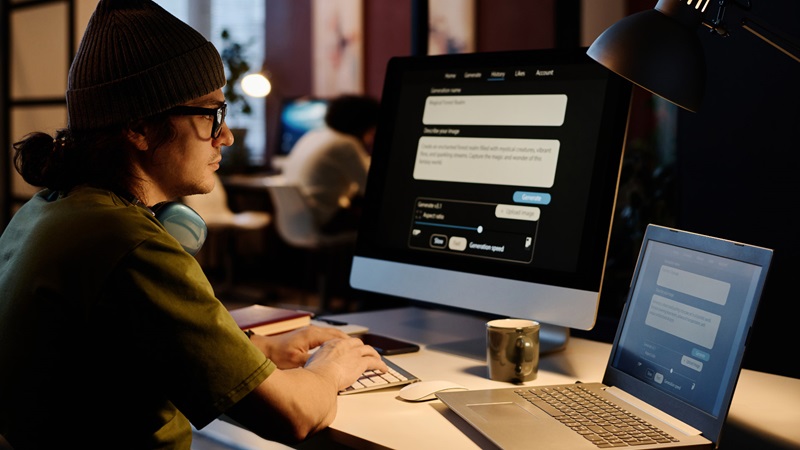How organizational design can impact employee experience
So much has changed in our lives over the last few years, including what products and services we value, where we want to live and how we think about work. As people re-evaluate their lives, traditional employee engagement measures have increasingly been replaced by employee experience (EX) – the need to help people do and be their best, spanning engagement, retention, health, productivity, leadership and trust.
Competing and winning in this war on talent requires firms to become “irresistible organizations” – companies that competitors want to become and that employees will compete with other candidates to join.
So, how do leading EX organizations make this shift? How are the roles of HR and marketing departments changing? What are some of the best practices that leading organizations are focusing on to win in EX and become irresistible organizations?
Focus on EX design and moments that matter
As explained in Employee Experience Reimagined, HR departments typically address moments that matter with a decades-old, top-down approach, and HR serves as the primary conduit to a standard set of work-related experiences including recruiting, onboarding and training. It has become clear that the lines between traditional HR and marketing departments are blurring.
According to Accenture, "employees experience critical moments on a continual basis, across physical, human and digital dimensions,” and these are “not confined within the four walls of the organization.” Events in employees’ personal lives have a profound impact on their performance and productivity on the job. Offering onsite daycare or options to work from home are ways to make it easier for staff to balance the many demands of their personal and professional lives.
Accenture has suggested a new paradigm for talent management that includes three dimensions of EX: physical experiences, human experiences and digital experiences. Employee Experience Reimagined highlights how forward-thinking companies are taking a more holistic view of workers’ preferences and needs. They recognize that employees want to have more choice when defining their experiences, and many leaders even plan to co-create these experiences with their employees. The principles of customer-centric design, typically found within marketing, are now being applied to employee journeys, typically managed by the HR department.
According to KPMG, HR executives are ranking EX design among their top three current initiatives and continuing over the next couple of years. Ninety-three per cent of “pathfinding HR organizations” believe that EX design is a “strategic priority for the entire organization.” The need for a frictionless, connected EX and customer experience (CX) is “increasingly driving HR organizations to focus on the capability of design thinking, a human-centric, creative approach to problem solving.”
So, why design thinking? Design thinking, as KPMG explains, is all about empathy and understanding employees and their needs from various perspectives. Through the adoption of a more human-centric mindset, “design thinking can lead to a more satisfied, efficient workplace wherein employees have access to the required resources, possess the right mindset, function within the right culture, and are able to give their best to the organization.”
HR technology and its importance to EX
A common past assumption is that the HR processes are substantially similar across companies, industries and countries, not substantially different. All of these systems have been designed to serve companies’ needs, not the needs of their employees.
The thinking around this has completely shifted, as explained by KennedyFitch. As we are moving toward an employee-centric world, we need a technology environment that is designed with individual workers’ needs in mind. Many companies encourage a “bring your own device” approach for employee smartphones. “In the world of employee centricity, it will be necessary to transition towards a technology environment, where ‘I can bring my own HR.’” HR technologies are attracting a lot of venture capital as different providers are producing various HR platforms and solutions and more HR tech start-ups are blossoming.
Why not hire a Chief Experience Officer?
Twenty years ago, organizations would hire a Chief Marketing Officer (CMO) to be the steward of the company brand. More recently, CMOs are being asked to transition into Chief Experience Officers (CXOs) with a more significant span of control to understand and optimize the touchpoints that a customer has with an organization and its brand, whether they be physical, digital, emotional or otherwise.
Strong parallels have been identified between a superior CX and EX. With strong EX, you can attract the best talent, drive workforce engagement and improve productivity and retention. This translates to an improved CX, which drives customer loyalty to the brand and generates more sales.
In essence, the role of the CXO is to:
- Craft a workplace experience that reflects the mission, vision and values of the company
- Create memorable, meaningful and purposeful connections for employees
- Deliver tools and technology that enable seamless workflow across the organization
- Instill enthusiasm and excitement for the work of the organization
Final thoughts
The battleground to attract top talent, retain employees and constantly upskill them to address the complex and demanding business environment is intense. To face these headwinds, organizations must be constantly updating in response to the changing environment. Much of this responsibility falls to the HR function, which is increasingly reinventing itself with new strategies for improving EX, new technologies that allow for personalization of the HR experience to employees, and new ways of reinventing EX through design thinking.
Progressive organizations are investing in new roles such as the CXO, and ensuring that the strategic discussion around a company’s EX is a topic for the C-suite as they will enable the action plan.
The link between CX and EX is well established. The first focus of many businesses is on CX, but as this final blog in the series demonstrates, the focus of the organization is now squarely centered around EX and ensuring that the lifeblood of the organization – its people – are as happy and engaged in the organization’s mission as possible. This responsibility does not fall to one functional area. It must be the focus of senior management and it needs to govern the strategic approaches of other functional areas including HR and marketing. Once fully engaged and aligned to the mission of the organization, employees will go that extra mile to create the experiences and meet the expectations of an ever-demanding product and service consumer.
Authors:
Joanne Cheevers, Director of Partner Marketing, Introhive
Geoff Day, Director, Loyalty Marketing, Sobeys
Lori Steiner, Marketing Director, Membership, Automotive & GCR, CAA Club Group


































